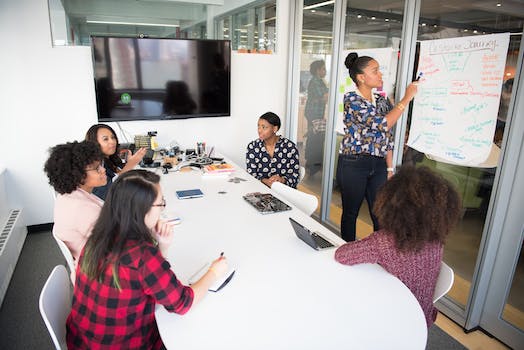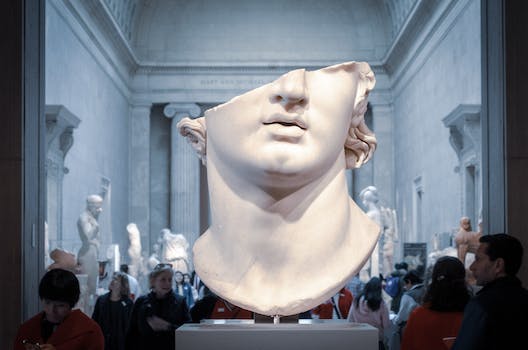-
Table of Contents
- How UNESCO and Saudi Arabia are Working Together to Preserve Cultural Heritage
- Exploring the Benefits of Collaboration Between UNESCO and Saudi Arabia
- Examining the Impact of UNESCO and Saudi Arabia’s Five Projects to Preserve Cultural Heritage
- Understanding the Challenges of Preserving Cultural Heritage in Saudi Arabia
- Q&A
“Preserving Our Heritage Together: UNESCO and Saudi Arabia Working in Harmony.”
The United Nations Educational, Scientific and Cultural Organization (UNESCO) and Saudi Arabia have collaborated on five projects to preserve cultural heritage. These projects are part of UNESCO’s mission to promote international collaboration in the fields of education, science, culture, and communication. The projects are aimed at preserving the cultural heritage of Saudi Arabia, which is rich in history and culture. The projects include the restoration of historic sites, the preservation of traditional crafts, and the promotion of cultural exchange. Through these projects, UNESCO and Saudi Arabia are working together to ensure that the cultural heritage of the country is preserved for future generations.
How UNESCO and Saudi Arabia are Working Together to Preserve Cultural Heritage

UNESCO and Saudi Arabia have been working together to preserve cultural heritage for many years. The two organizations have collaborated on a number of projects, including the restoration of historic sites, the preservation of traditional arts and crafts, and the promotion of cultural diversity.
One of the most significant projects that UNESCO and Saudi Arabia have undertaken is the restoration of the historic city of Diriyah. This ancient city was once the capital of the first Saudi state and is now a UNESCO World Heritage Site. The project has involved the restoration of the city’s historic buildings, the preservation of its traditional architecture, and the promotion of its cultural heritage.
In addition to the restoration of Diriyah, UNESCO and Saudi Arabia have also collaborated on the preservation of traditional arts and crafts. The two organizations have worked together to promote the traditional arts and crafts of the region, such as pottery, weaving, and jewelry making. They have also worked to ensure that these traditional crafts are passed down to future generations.
Finally, UNESCO and Saudi Arabia have also worked together to promote cultural diversity. The two organizations have collaborated on a number of initiatives to promote cultural exchange and understanding between different cultures. This includes the establishment of cultural centers, the organization of cultural festivals, and the promotion of cultural dialogue.
Overall, UNESCO and Saudi Arabia have been working together to preserve cultural heritage for many years. Through their collaboration, they have been able to restore historic sites, preserve traditional arts and crafts, and promote cultural diversity. This has helped to ensure that the cultural heritage of the region is preserved for future generations.
Exploring the Benefits of Collaboration Between UNESCO and Saudi Arabia
Collaboration between UNESCO and Saudi Arabia has the potential to bring about a number of benefits for both parties. UNESCO is an international organization that works to promote education, science, culture, and communication around the world. Saudi Arabia is a major player in the Middle East and has a strong economy and a large population. By working together, UNESCO and Saudi Arabia can leverage their respective strengths to create a better future for both countries.
One of the main benefits of collaboration between UNESCO and Saudi Arabia is the potential for increased educational opportunities. UNESCO works to promote education around the world, and Saudi Arabia has a large population of young people who could benefit from improved educational opportunities. By working together, UNESCO and Saudi Arabia could develop programs to improve access to education and provide more resources for students. This could help to create a more educated and skilled workforce in Saudi Arabia, which could lead to increased economic growth and development.
Another benefit of collaboration between UNESCO and Saudi Arabia is the potential for increased cultural exchange. UNESCO works to promote cultural understanding and appreciation around the world, and Saudi Arabia has a rich cultural heritage. By working together, UNESCO and Saudi Arabia could develop programs to promote cultural exchange between the two countries. This could help to create a better understanding of each other’s cultures and could lead to increased cooperation and collaboration between the two countries.
Finally, collaboration between UNESCO and Saudi Arabia could lead to increased scientific research and development. UNESCO works to promote scientific research and development around the world, and Saudi Arabia has a strong economy and a large population of scientists and engineers. By working together, UNESCO and Saudi Arabia could develop programs to promote scientific research and development in both countries. This could lead to increased innovation and technological advancement, which could benefit both countries.
In conclusion, collaboration between UNESCO and Saudi Arabia has the potential to bring about a number of benefits for both parties. Increased educational opportunities, cultural exchange, and scientific research and development are just a few of the potential benefits of collaboration between the two countries. By working together, UNESCO and Saudi Arabia could create a better future for both countries.
Examining the Impact of UNESCO and Saudi Arabia’s Five Projects to Preserve Cultural Heritage
Cultural heritage is an important part of any society, and it is essential to preserve it for future generations. UNESCO and Saudi Arabia have both taken steps to ensure that cultural heritage is preserved and protected. In this article, we will examine the impact of five projects that UNESCO and Saudi Arabia have undertaken to preserve cultural heritage.
The first project is the restoration of the historic city of Diriyah. This project was initiated by UNESCO and the Saudi government in order to preserve the city’s cultural heritage. The project included the restoration of the city’s historic buildings, the preservation of its archaeological sites, and the promotion of its cultural heritage. The project has been successful in preserving the city’s cultural heritage and has also helped to attract tourists to the area.
The second project is the preservation of the historic city of Jeddah. This project was initiated by UNESCO and the Saudi government in order to protect the city’s cultural heritage. The project included the restoration of the city’s historic buildings, the preservation of its archaeological sites, and the promotion of its cultural heritage. The project has been successful in preserving the city’s cultural heritage and has also helped to attract tourists to the area.
The third project is the preservation of the historic city of Mada’in Saleh. This project was initiated by UNESCO and the Saudi government in order to protect the city’s cultural heritage. The project included the restoration of the city’s historic buildings, the preservation of its archaeological sites, and the promotion of its cultural heritage. The project has been successful in preserving the city’s cultural heritage and has also helped to attract tourists to the area.
The fourth project is the preservation of the historic city of Najran. This project was initiated by UNESCO and the Saudi government in order to protect the city’s cultural heritage. The project included the restoration of the city’s historic buildings, the preservation of its archaeological sites, and the promotion of its cultural heritage. The project has been successful in preserving the city’s cultural heritage and has also helped to attract tourists to the area.
The fifth project is the preservation of the historic city of Taif. This project was initiated by UNESCO and the Saudi government in order to protect the city’s cultural heritage. The project included the restoration of the city’s historic buildings, the preservation of its archaeological sites, and the promotion of its cultural heritage. The project has been successful in preserving the city’s cultural heritage and has also helped to attract tourists to the area.
Overall, the projects undertaken by UNESCO and Saudi Arabia have had a positive impact on the preservation of cultural heritage in the region. The projects have helped to restore and preserve historic buildings, archaeological sites, and cultural heritage. They have also helped to attract tourists to the area, which has helped to boost the local economy. These projects have been successful in preserving the cultural heritage of the region and will continue to do so for many years to come.
Understanding the Challenges of Preserving Cultural Heritage in Saudi Arabia
Preserving cultural heritage in Saudi Arabia is a complex and challenging task. The country is home to a rich and diverse cultural heritage, with a long history of cultural exchange and interaction between different peoples and civilizations. However, the rapid modernization of the country has posed a number of challenges to the preservation of this heritage.
One of the main challenges is the lack of awareness and understanding of the importance of preserving cultural heritage. Many people in Saudi Arabia are unaware of the value of their cultural heritage and the need to protect it. This lack of awareness has led to a lack of investment in preserving cultural heritage, resulting in the destruction of many important sites and artifacts.
Another challenge is the lack of resources available for preserving cultural heritage. Many of the sites and artifacts that need to be preserved are in remote areas, making it difficult to access them and to provide the necessary resources for their preservation. Additionally, the cost of preserving cultural heritage can be prohibitively expensive, making it difficult for many organizations to invest in the necessary resources.
Finally, there is the challenge of competing interests. In Saudi Arabia, there is often a tension between the desire to preserve cultural heritage and the need to develop the country’s economy. This can lead to conflicts between those who want to preserve cultural heritage and those who want to develop the economy.
Preserving cultural heritage in Saudi Arabia is a complex and challenging task. However, it is also an important one, as it is essential to preserving the country’s unique cultural identity. To ensure that this heritage is preserved, it is important to raise awareness of its importance, to invest in the necessary resources, and to ensure that competing interests are balanced.
Q&A
1. What are the five projects that UNESCO and Saudi Arabia are collaborating on?
The five projects that UNESCO and Saudi Arabia are collaborating on are: the restoration of the historic city of Diriyah, the preservation of the archaeological site of Al-Hijr, the conservation of the historic city of Jeddah, the safeguarding of the cultural heritage of the Al-Ahsa Oasis, and the preservation of the cultural heritage of the Al-Ula region.
2. What is the purpose of these projects?
The purpose of these projects is to preserve and protect the cultural heritage of Saudi Arabia. The projects will help to ensure that the country’s unique cultural heritage is preserved for future generations to enjoy and appreciate.
3. How will these projects benefit Saudi Arabia?
These projects will benefit Saudi Arabia by helping to preserve its unique cultural heritage. The projects will also help to promote tourism in the country, as well as create jobs and economic opportunities for local communities.
4. What is UNESCO’s role in these projects?
UNESCO’s role in these projects is to provide technical and financial support to the Saudi Arabian government. UNESCO will also provide advice and guidance on the best ways to preserve and protect the country’s cultural heritage.The collaboration between UNESCO and Saudi Arabia on five projects to preserve cultural heritage is a positive step forward in the preservation of cultural heritage. It is a great example of how two countries can work together to protect and promote the cultural heritage of both countries. This collaboration will help to ensure that the cultural heritage of both countries is preserved and celebrated for generations to come. It is a great example of how international cooperation can be beneficial for all involved.
![]()









